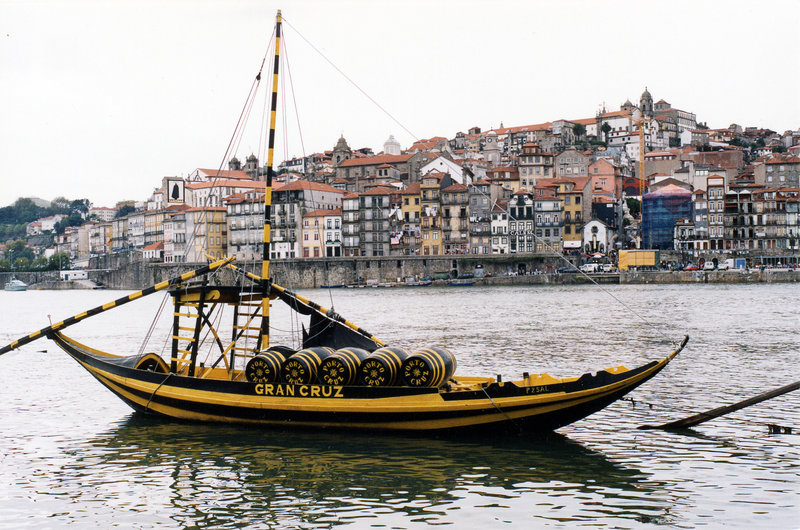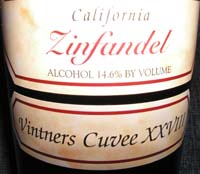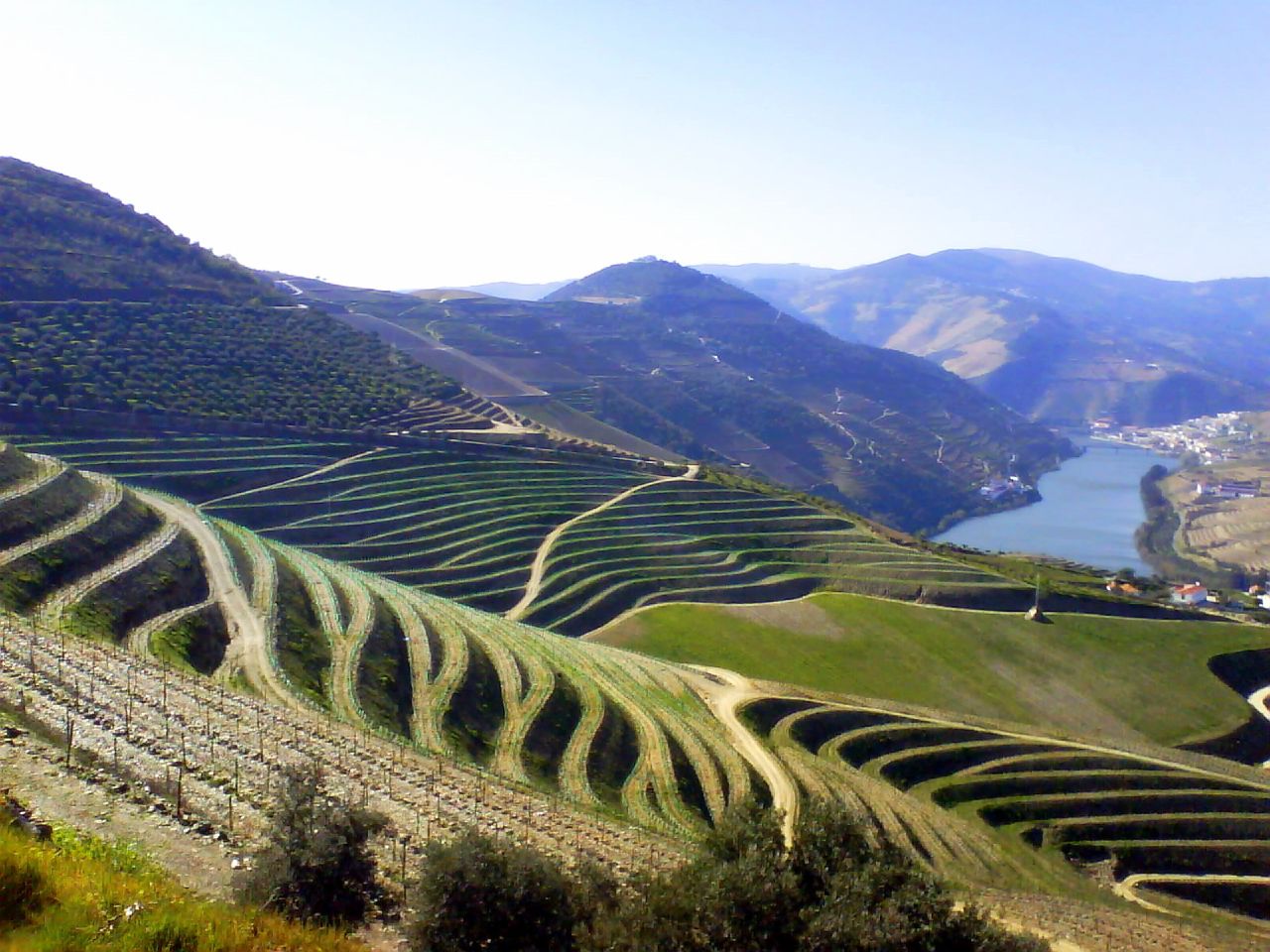|
Baga (grape)
Baga is a red Portuguese wine grape variety planted primarily in the Bairrada DOC. As a varietal, Baga produces tannic wines with high acidity. J. Robinson ''Jancis Robinson's Wine Course'' Third Edition pg 130 Abbeville Press 2003 Synonyms Baga is also known under the synonyms Baga de Louro, Baguinha, Bairrada, Bairrado Tinta, Baya, Carrasquenho, Carrega Burros, Goncalveira, Morete, Moreto, Paga Dividas, Poeirinha, Poeirinho, Povolide, Preiinho, Pretinho, Preto Rifete, Rifete, Rosete, Tinta Bairrada, Tinta Bairradina, Tinta da Bairrada, Tinta de Baga, and Tinta Fina. See also *List of Portuguese grape varieties Portugal's history of viticulture and vinification covers many centuries and has included the use of an extensive number native varieties. In addition, through experimentation and field trials a number of new varieties have emerged and are now pla ... References {{reflist Red wine grape varieties ... [...More Info...] [...Related Items...] OR: [Wikipedia] [Google] [Baidu] |
Vitis Vinifera
''Vitis vinifera'', the common grape vine, is a species of flowering plant, native to the Mediterranean Basin, Mediterranean region, Central Europe, and southwestern Asia, from Morocco and Portugal north to southern Germany and east to northern Iran. There are currently between List of grape varieties, 5,000 and 10,000 varieties of ''Vitis vinifera'' grapes though only a few are of commercial significance for wine and table grape production. The wild grape is often classified as ''Vitis vinifera'' ''sylvestris'' (in some classifications considered ''Vitis sylvestris''), with ''Vitis vinifera'' ''vinifera'' restricted to cultivated forms. Domesticated vines have hermaphrodite#Botany, hermaphrodite flowers, but ''sylvestris'' is plant sexuality, dioecious (male and female flowers on separate plants) and pollination is required for fruit to develop. Grapes can be eaten fresh or dried to produce raisins, Sultana (grape)#Raisins, sultanas, and Zante currant, currants. Grape leaves ar ... [...More Info...] [...Related Items...] OR: [Wikipedia] [Google] [Baidu] |
Synonyms
A synonym is a word, morpheme, or phrase that means exactly or nearly the same as another word, morpheme, or phrase in a given language. For example, in the English language, the words ''begin'', ''start'', ''commence'', and ''initiate'' are all synonyms of one another: they are ''synonymous''. The standard test for synonymy is substitution: one form can be replaced by another in a sentence without changing its meaning. Words are considered synonymous in only one particular sense: for example, ''long'' and ''extended'' in the context ''long time'' or ''extended time'' are synonymous, but ''long'' cannot be used in the phrase ''extended family''. Synonyms with exactly the same meaning share a seme or denotational sememe, whereas those with inexactly similar meanings share a broader denotational or connotational sememe and thus overlap within a semantic field. The former are sometimes called cognitive synonyms and the latter, near-synonyms, plesionyms or poecilonyms. Lexic ... [...More Info...] [...Related Items...] OR: [Wikipedia] [Google] [Baidu] |
Portugal
Portugal, officially the Portuguese Republic, In recognized minority languages of Portugal: :* mwl, República Pertuesa is a country located on the Iberian Peninsula, in Southwestern Europe, and whose territory also includes the Macaronesian archipelagos of the Azores and Madeira. It features the westernmost point in continental Europe, its mainland west and south border with the North Atlantic Ocean and in the north and east, the Portugal-Spain border, constitutes the longest uninterrupted border-line in the European Union. Its archipelagos form two autonomous regions with their own regional governments. On the mainland, Alentejo region occupies the biggest area but is one of the least densely populated regions of Europe. Lisbon is the capital and largest city by population, being also the main spot for tourists alongside Porto, the Algarve and Madeira. One of the oldest countries in Europe, its territory has been continuously settled and fought over since prehistoric tim ... [...More Info...] [...Related Items...] OR: [Wikipedia] [Google] [Baidu] |
Portuguese Wine
Portuguese wine was mostly introduced by the Romans and other ancient Mediterranean peoples who traded with local coastal populations, mainly in the South. In pre-Roman Gallaecia-Lusitania times, the native peoples only drank beer and were unfamiliar with wine production. Portugal started to export its wines to Rome during the Roman Empire. Modern exports developed with trade to England after the Methuen Treaty in 1703. From this commerce a wide variety of wines started to be grown in Portugal. And, in 1758, one of the first wine-producing regions of the world, the '' Região Demarcada do Douro'' was created under the orientation of Marquis of Pombal, in the Douro Valley. Portugal has two wine-producing regions protected by UNESCO as World Heritage: the Douro Valley Wine Region (''Douro Vinhateiro'') and Pico Island Wine Region (''Ilha do Pico Vinhateira''). Portugal has a big variety of local kinds, producing a very wide variety of different wines with distinctive personality ... [...More Info...] [...Related Items...] OR: [Wikipedia] [Google] [Baidu] |
Grape Variety
This list of grape varieties includes cultivated grapes, whether used for wine, or eating as a table grape, fresh or dried (raisin, currant, sultana). For a complete list of all grape species including those unimportant to agriculture, see Vitis. The term ''grape variety'' refers to cultivars rather than actual botanical varieties according to the International Code of Nomenclature for Cultivated Plants, because they are propagated by cuttings and may have unstable reproductive properties. However, the term ''variety'' has become so entrenched in viticulture that any change to using the term ''cultivar'' instead is unlikely. Single species grapes While some of the grapes in this list are hybrids, they are hybridized within a single species. For those grapes hybridized across species, known as interspecific hybrids, see the section on multispecies hybrid grapes below. ''Vitis vinifera'' (wine) Red grapes White grapes Rose Grapes ''Vitis vinifera'' (table) ... [...More Info...] [...Related Items...] OR: [Wikipedia] [Google] [Baidu] |
Bairrada DOC
Bairrada is a Portuguese wine region located in the Beira Litoral Province. The region has Portugal's highest wine classification as a '' Denominação de Origem Controlada'' (DOC), and its popularity has surged over the last years. It is small and quite narrow coastal region, part of the broader region of Beira Atlântico, and it is bordered to the northeast by the Lafões IPR and to the east by the Dão DOC. It is located close to the Atlantic Ocean and the currents have a moderating effect on the climate, resulting in a mild, maritime climate with abundant rainfall. The region is hilly, but the majority of the vineyards are placed on flatter land. About 2/3 of the national sparkling wine production takes place in this region, and in recent years the city of Anadia received the nickname of "Capital do Espumante", which translates to "Sparkling Wine Capital". The region is also known for its deep colored tannic red wines, that often have bell pepper and black currant flavors, a ... [...More Info...] [...Related Items...] OR: [Wikipedia] [Google] [Baidu] |
Varietal
A varietal wine is a wine made primarily from a single named grape variety, and which typically displays the name of that variety on the wine label.The American Heritage Dictionary of the English Language, Fourth Edition, 2000.winepros.com.au. Examples of grape varieties commonly used in varietal wines are Cabernet Sauvignon, Chardonnay and Merlot. Wines that display the name of two or more varieties on their label, such as a Chardonnay- Viognier, are ''blends'' and not varietal wines. The term is frequently misused in place of vine variety; the term ''variety'' refers to the vine or grape, while ''varietal'' refers to the wine produced by a variety. The term was popularized in the US by Maynard Amerine at the University of California, Davis after Prohibition seeking to encourage growers to choose optimal vine varieties, and later promoted by Frank Schoonmaker in the 1950s and 1960s, ultimately becoming widespread during the California wine boom of the 1970s. Varietal wines a ... [...More Info...] [...Related Items...] OR: [Wikipedia] [Google] [Baidu] |
Tannin (wine)
The phenolic content in wine refers to the phenolic compounds—natural phenol and polyphenols—in wine, which include a large group of several hundred chemical compounds that affect the taste, color and mouthfeel of wine. These compounds include phenolic acids, stilbenoids, flavonols, dihydroflavonols, anthocyanins, flavanol monomers ( catechins) and flavanol polymers ( proanthocyanidins). This large group of natural phenols can be broadly separated into two categories, flavonoids and non-flavonoids. Flavonoids include the anthocyanins and tannins which contribute to the color and mouthfeel of the wine. The non-flavonoids include the stilbenoids such as resveratrol and phenolic acids such as benzoic, caffeic and cinnamic acids. Origin of the phenolic compounds The natural phenols are not evenly distributed within the fruit. Phenolic acids are largely present in the pulp, anthocyanins and stilbenoids in the skin, and other phenols ( catechins, proanthocyanidins and fla ... [...More Info...] [...Related Items...] OR: [Wikipedia] [Google] [Baidu] |
Acidity (wine)
The acids in wine are an important component in both winemaking and the finished product of wine. They are present in both grapes and wine, having direct influences on the color, balance and taste of the wine as well as the growth and vitality of yeast during fermentation and protecting the wine from bacteria. The measure of the amount of acidity in wine is known as the “titratable acidity” or “total acidity”, which refers to the test that yields the total of all acids present, while strength of acidity is measured according to pH, with most wines having a pH between 2.9 and 3.9. Generally, the lower the pH, the higher the acidity in the wine. There is no direct connection between total acidity and pH (it is possible to find wines with a high pH for wine and high acidity). In wine tasting, the term “acidity” refers to the fresh, tart and sour attributes of the wine which are evaluated in relation to how well the acidity balances out the sweetness and bitter componen ... [...More Info...] [...Related Items...] OR: [Wikipedia] [Google] [Baidu] |
List Of Portuguese Grape Varieties
Portugal's history of viticulture and vinification covers many centuries and has included the use of an extensive number native varieties. In addition, through experimentation and field trials a number of new varieties have emerged and are now playing key roles in producing the country's wide array of wines. The relative absence of many international varieties such as Cabernet Sauvignon, Chardonnay and Semillon is another characteristic of this country's wine industry, although in recent decades many of these varieties have been brought into wider use as the lists below reveal. Portugal's wine production in 2019 was 6.5 million hectolitres (Mhl), consistent with its annual average since 2015, and the forecast for 2020 is also 6.5 Mhl. This industry makes an important contribution to the country's annual income by attracting a vigorous local market and by being exported all over the world with France, the United States, the United Kingdom, Brazil and Germany as the main destinat ... [...More Info...] [...Related Items...] OR: [Wikipedia] [Google] [Baidu] |






